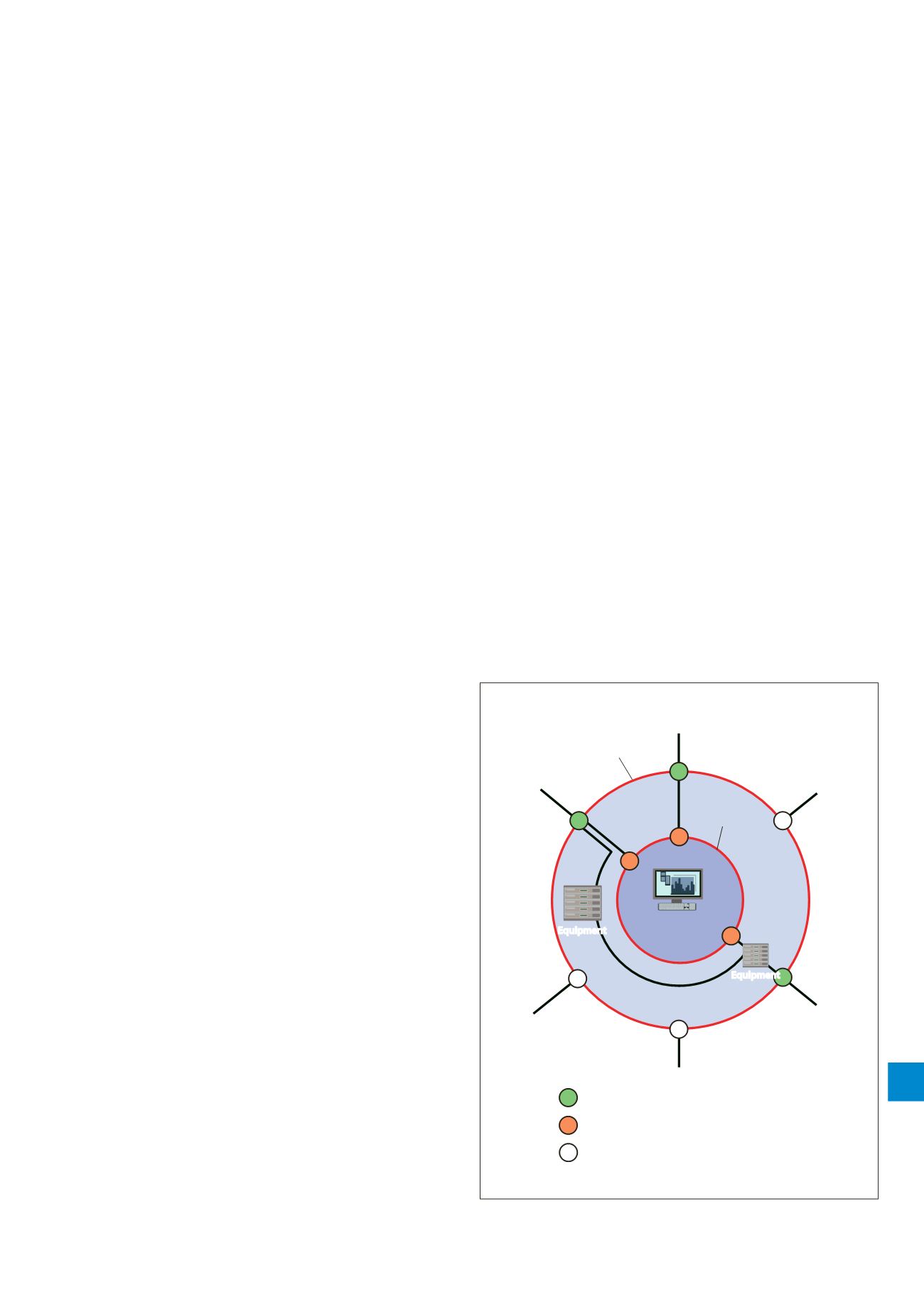

Total Solution to Earthing & Lightning Protection |
9AKK106354A3360
16/17
16
Internal zones
LPZ 1 is the internal area that is subject to partial lightning
currents. The conducted lightning currents and/or
switching surges are reduced compared with the external
zones LPZ
0
. This is typically the area where services enter
the structure or where the main power switchboard is located.
LPZ 2 is an internal area that is further located inside the
structure where the remnants of lightning impulse currents
and/or switching surges are reduced compared with
LPZ 1. This is typically a screened room or, for mains power,
at the sub-distribution board area.
Protection levels within a zone must be coordinated with the
immunity characteristics of the equipment to be protected,
i.e., the more sensitive the equipment, the more protected the
zone required.
The existing fabric and layout of a building may make readily
apparent zones, or LPZ techniques may have to be applied to
create the required zones.
Lightning current or equipotential bonding SPDs are also
used on overhead service lines feeding the structure that are
at risk from a direct strike. However, the use of these SPDs
alone “provides no effective protection against failure of
sensitive electrical or electronic systems”, to quote
IEC/BS EN 62305 part 4, which is specifically dedicated
to the protection of electrical and electronic systems
within structures.
Lightning current SPDs form one part of a coordinated set
of SPDs that include overvoltage SPDs - which are needed in
total to effectively protect sensitive electrical and electronic
systems from both lightning and switching transients.
Lightning Protection Zones (LPZs)
Whilst BS 6651 recognized a concept of zoning in Annex C,
IEC/BS EN 62305-4 defines the concept of Lightning
Protection Zones (LPZs). Figure 8 illustrates the basic LPZ
concept defined by protection measures against LEMP as
detailed within part 4.
Within a structure a series of LPZs are created to have,
or identified as already having, successively less
exposure to the effects of lightning.
Successive zones use a combination of bonding, shielding
and coordinated SPDs to achieve a significant reduction in
LEMP severity, from conducted surge currents and transient
overvoltages, as well as radiated magnetic field effects.
Designers coordinate these levels so that the more sensitive
equipment is sited within the more protected zones.
The LPZs can be split into two categories - 1 external zone
(LPZ
0
) and usually 2 internal zones (LPZ 1, 2)
although further zones can be introduced for a further reduction
of the electromagnetic field and lightning current if required.
External zones
LPZ
0
is the area subject to direct lightning strokes and
therefore may have to carry up to the full lightning current.
This is typically the roof area of a structure. The full
electromagnetic field occurs here. It also covers the area not
subject to direct lightning strokes and typically includes the
sidewalls of a structure. However the full electromagnetic field
still occurs here and conducted partial lightning currents and
switching surges can occur here.
Boundary
of LPZ 2
(shielded room)
Boundary
of LPZ 1
(LPS)
Antenna
Electrical
power line
Water pipe
Gas pipe
Telecoms
line
Mast or
railing
LPZ 2
B
B
B
B
LPZ 1
Critical
equipment
Equipment
SPD 1/2 - Overvoltage protection
Connected service directly bonded
SPD 0/1 - Lightning current protection
Equipment
LPZ
0
Figure 13. Basic LPZ concept - IEC/BS EN 62305-4


















